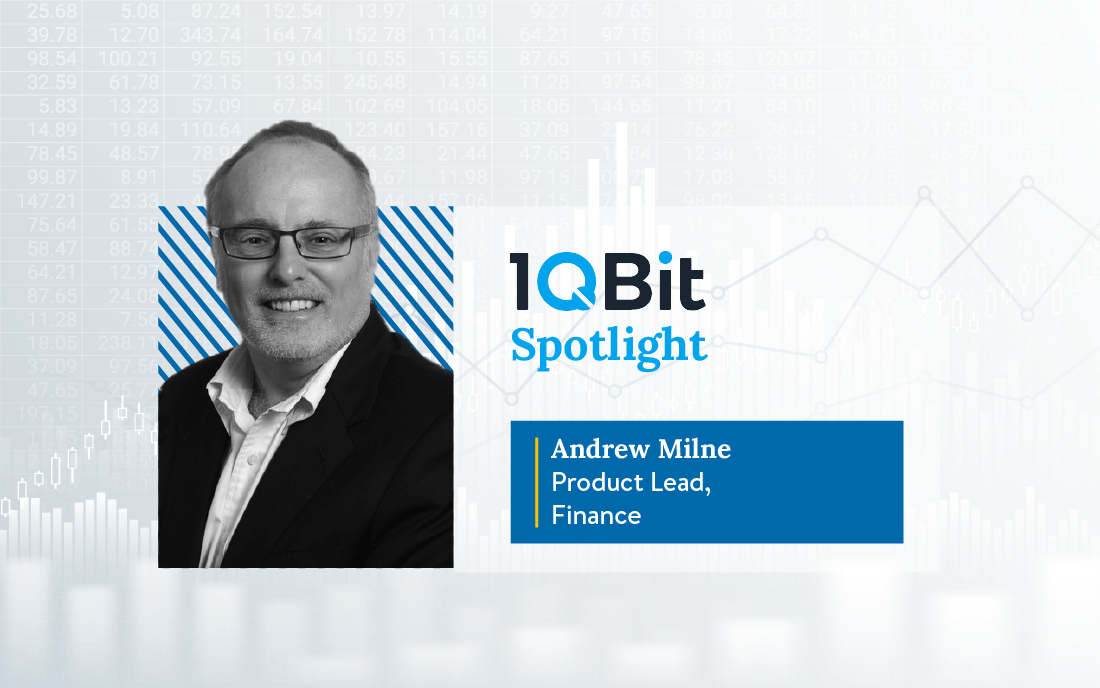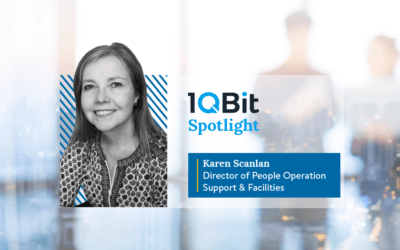Andrew Milne immigrated from England to Canada as a child. He grew up partly in Toronto and partly in Vancouver. He began his studies in Computing Science at Simon Fraser University but later transferred to the University of British Columbia (UBC) to obtain his bachelor’s degree in Electrical Engineering. He followed this with a master’s degree in Engineering Physics, where his thesis work focused on plasma confinement, although (as he puts it now) he enjoyed building the equipment to do the experiments as much as actually doing the experiments themselves.
After UBC, Andrew shifted his focus back to engineering. He spent some time teaching at community colleges in the north of British Columbia and Alberta, and, in 1988, he moved east to take a position in the Strategic Engineering Department of the Canadian Broadcasting Corporation (CBC), then part of CBC’s Engineering Headquarters in Montreal. Strategic engineering led the transformation of CBC from analog to digital, and, in helping with this, Andrew developed an interest in audio and video compression algorithms. He published a number of papers on algorithm evaluation, served as an expert listener for MPEG, and found time to teach a digital audio course at the School of Music at McGill University.
“Market information is a $30 billion market dominated by market data publishers and aggregators, but there is room for new entrants that focus on new technologies and new customer groups. Our CME Market Sentiment Meter is one of them.”
—Andrew Milne
Andrew left CBC Engineering in 1995 and travelled south to join an internet startup in New York. For the next twenty years, he and his family lived in the small town of Maplewood, New Jersey, forty minutes by train from Manhattan. He has worked for AT&T, Sony, the New York Mercantile Exchange (NYMEX), and the CME Group. Most of his work involves the creation of new products and systems in which algorithm design plays a significant role. He holds 14 US patents, most as the sole or lead inventor.
In 2015, Andrew left CME Group to join 1QBit, and now leads the product development team for financial services. He is also co-creator of the CME Market Sentiment Meter.
We sat down with Andrew to explore what he is currently working on, how the Market Sentiment Meter works, and what is the future of quantum computing and finance.
What do you do when you are not working?
I like to go for long walks with my wife on the many trails in and around Vancouver. I also like to get together with my colleagues. About a year ago, a group of us here at 1QBit formed a reading and writing group focused on applying the ideas in Sun Tzu’s Art of War to the challenges faced in modern business. Our linguistic and cultural backgrounds are very diverse, and we have discovered (among other things) that the translations of Sun Tzu into other languages often carry as much meaning as the text itself. We have hopes of bringing some new commentaries to this classic work. I also like to go running when I find time to fit it in.

Saanich, British Columbia
How did you end up at 1QBit?
I was part of the team at CME Group that evaluated 1QBit for strategic investment. At the time, I was in charge of research and development for the CME Match Engine team. I was technically an employee of the New York Mercantile Exchange (NYMEX), acquired by CME in 2008. I had already designed engines for NYMEX and the Dubai Mercantile Exchange, so CME was an exciting challenge to take on. I ended up working on a variety of projects.
In 2015, I had the opportunity to leave CME Group and join 1QBit. My family lives in Vancouver, but it was still something of a step to leave New York and come to work directly for the company I had recommended as an investment.
What is your role at 1QBit?
I lead the Finance Products Team. We deal with three main areas, which reflect our major investors’ interests from the finance sector: electronic trading, portfolio construction, and risk management. We have other teams at 1QBit that work on specific R&D projects for some of our financial clients. In Finance Products, however, our goal is to create products and services that can be sold as units instead of doing individual projects.
A lot of my thinking about products is based on the time I spent at Sony before joining NYMEX. Part of this was with Sony’s Network Applications and Content Services Department, a Tokyo-based group that worked to create products that combined Sony hardware with various forms of software and other content. I came to realize that new products often have to reach their customers through existing channels. Value chains have to be figured out because synergy doesn’t help if it brings your channel partners into conflict. Success in R&D is only the first step in what can be a long journey.
What are you currently working on?
The main focus of the team right now is on market information. Market information is a $30 billion market dominated by market data publishers and aggregators, but there is room for new entrants that focus on new technologies and new customer groups. Our CME Market Sentiment Meter is one of them.
What excites you about your work?
My colleagues at 1QBit are among the smartest people I have ever worked with. It was a genuine thrill to stand inside one of D-Wave Systems’s quantum annealers and imagine that something we had written was being used to control a quantum computing chip that couldn’t even start working until it had been cooled to the temperature of liquid helium.
That said, I am excited differently by how the company has grown. 1QBit is my third start-up, and I think that its prospects for success are very promising. The investors and the leadership team can take a lot of credit for this.
What do you enjoy most about your position?
It’s been hard work, but I’ve also had a lot of freedom to pursue new concepts, as have others at the company. To borrow some thoughts I saw expressed in IEEE Spectrum a while back, start-ups in quantum computing will have to cross a long revenue desert before some application is found that gives them a decisive advantage. Something as big as email was for the internet, for example. No one knows what this is yet, so we talk about it as the “quantum surprise”.
Being at 1QBit, I think that we have a better than average chance of being there for the quantum surprise. To be perfectly candid, I enjoy playing for a winning team.
Can you please explain how the Market Sentiment Meter works?
The idea behind the Market Sentiment Meter is that traders can be grouped into different schools of thought. We cannot observe these directly. However, by assuming their existence, we can look for “patterns of intent” in the market data published by exchanges like NYMEX, COMEX, CBOT, and CME (the four Designated Contract Markets that make up the CME Group). We began by looking for the divergence and re-convergence of these patterns around events where the timing was known, but the outcome was uncertain. The Brexit vote in 2016 and the U.S. election later that year are prime examples.
Our MSM research program looks to extend the correlations that exist between sentiment states and persistent market conditions. The techniques that work well for major events are tested by applying them to smaller events and to day-to-day market movements in general. Our longer-term goal is to use the power of quantum computers to detect patterns of intent in new and different ways.
What are the primary issues in finance that quantum computing can solve?
The simple answer is that nobody knows, but at the same time, nobody wants to discover that their business model has been suddenly disrupted or that a competitor with access to quantum computers is suddenly able to undercut them. Quantum computers are still very small, but certain trading styles could benefit from using them right now. The challenge is to connect people working in narrow financial specialties with services built around an equally limited and specialized technology.

Andrew Milne, Product Lead, Finance
What is the future of quantum computing and finance?
It’s a bright future, but it will take some time to develop. The finance industry is massive beyond most people’s imagination. For example, global spending on information technology is just under $4 trillion per year. This is a huge number, but it’s pretty small compared to the total value of global assets under management. We’re talking about trillions versus hundreds of trillions. (Estimates of global assets vary, but they range from 140 trillion on Wikipedia to hundreds of trillions at Visual Capitalist.) So the overall pace of change is going to be small.
I am expecting the first applications of quantum computers to be in very specialized areas. However, specialization means essentially that these are areas where significant investments have already been made, as in human skills development, large amounts of conventional hardware, programming, and so on. To sell a quantum computing alternative, we will have to go against the interests of those established in the present way of doing things. I’m a big fan of Geoffrey Moore (Crossing the Chasm), and I think that the future will be set by how well we cross the chasm with our first set of serious applications. This depends on meeting the specific needs of specific customers.
Thank you for sharing your story with us, Andrew. It was a pleasure learning about your career and your unique perspective on quantum computing.
If you would like to learn more about 1QBit, please subscribe to our monthly newsletter.




